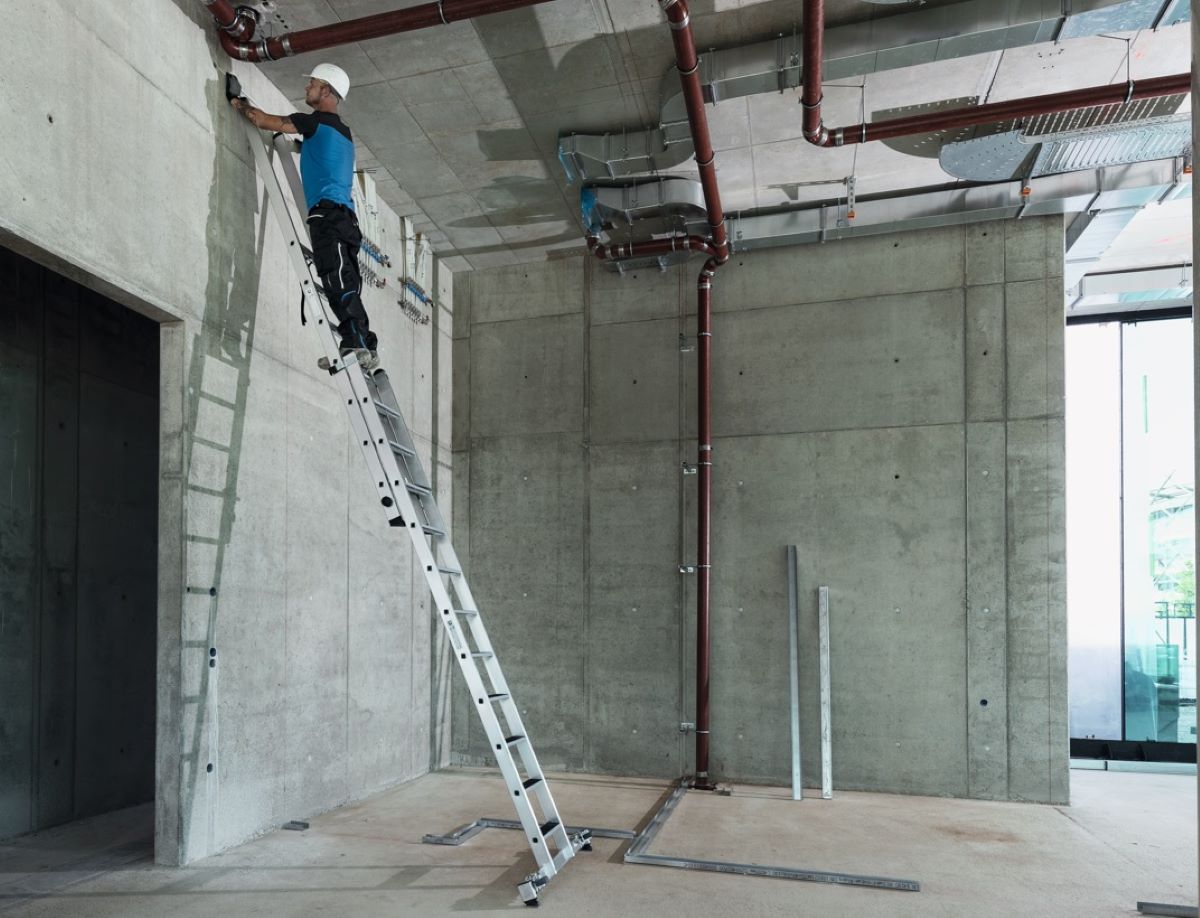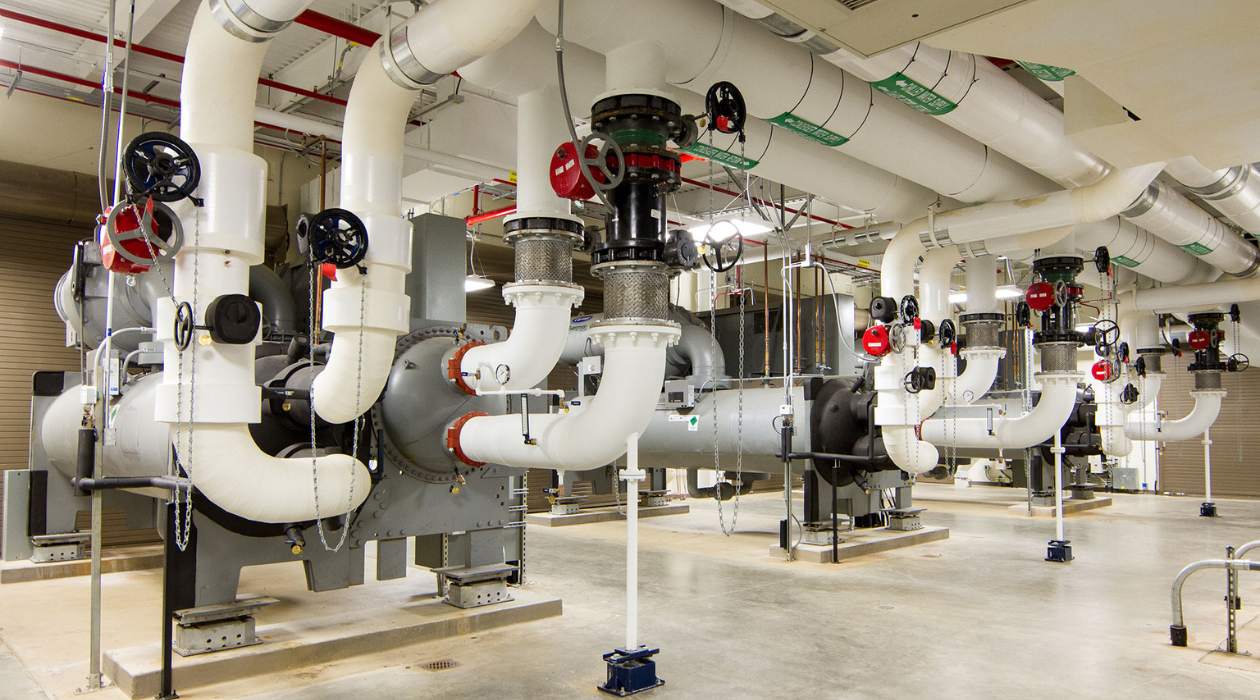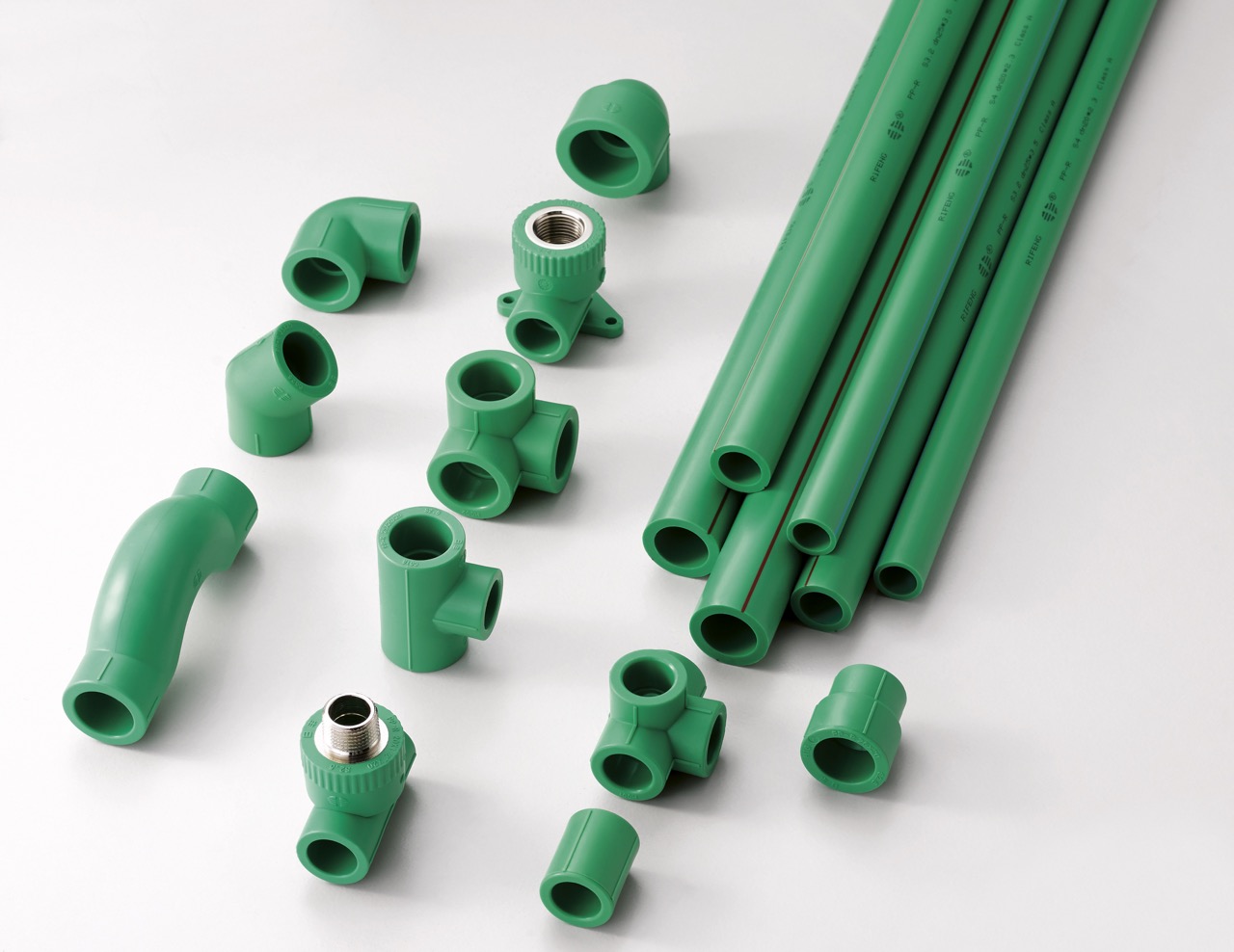

Articles
Understanding The Various Ladder Heights
Modified: October 22, 2024
Discover everything you need to know about articles in this comprehensive guide, including the benefits, types, and tips for choosing the tallest ladder for your needs.
(Many of the links in this article redirect to a specific reviewed product. Your purchase of these products through affiliate links helps to generate commission for Storables.com, at no extra cost. Learn more)
Introduction
A ladder is a simple and essential tool that has been used by humans for centuries. Its primary purpose is to provide a means of reaching higher elevations and accessing areas that would otherwise be out of reach. Ladders come in various shapes and sizes, but have you ever wondered what the tallest ladder in existence is?
In this article, we will explore the concept of ladder height and delve into the factors that influence it. We will also uncover the history of the tallest ladder ever recorded and discuss the advancements in ladder technology that have allowed for greater heights. Additionally, we will examine safety considerations when working with tall ladders and explore the common uses for these impressive structures.
So, if you’re curious about the world of ladders and want to learn more about the tallest ladder ever seen, read on!
Key Takeaways:
- The Ladder of Tyre, an ancient siege tower used by Alexander the Great, stood at an impressive 135 feet, showcasing historical engineering ingenuity and the determination to conquer challenging obstacles in warfare.
- Modern advancements in ladder technology, such as telescopic and articulating ladders, have pushed the boundaries of height, enabling workers to reach greater elevations with enhanced safety and stability.
Read more: How To Measure Ladder Height
Definition of a ladder
Before we discuss the tallest ladder, let’s start with a simple definition of what a ladder actually is. A ladder is a vertical or inclined set of rungs or steps that allows a person to climb up or down. It typically consists of two vertical side rails joined by rungs or steps, creating a sturdy and stable structure for safe ascent or descent.
Ladders can be made from a variety of materials, including wood, aluminum, fiberglass, and steel. Each material has its own advantages and disadvantages in terms of weight, strength, and durability. The choice of material often depends on the intended use of the ladder and the environment in which it will be used.
Ladders are designed to provide a safe and convenient way to access elevated areas, such as rooftops, shelves, or high storage spaces. They are widely used in construction, maintenance, painting, and other industries where working at height is necessary.
It’s important to note that ladders should only be used for their intended purpose and in accordance with safety guidelines. Improper use of ladders can result in accidents and injuries. Always follow manufacturer instructions and take necessary precautions when working with ladders.
Now that we have a clear understanding of what a ladder is, let’s move on to exploring ladder height and the factors that influence it.
Explanation of ladder height
Ladder height refers to the measurement of the distance from the base to the top of the ladder. It determines how far a ladder can reach and the maximum height it can safely allow a person to climb.
When it comes to ladder height, there are two key measurements to consider:
- Total height: This is the overall length of the ladder, from the bottom to the highest point. It includes both the usable length of the ladder and any additional height from non-usable sections such as the top cap or extension.
- Working height: This is the height at which a person can comfortably and safely perform tasks while standing on the ladder. It is typically measured by subtracting a certain distance (around 3 feet or 1 meter) from the total height to account for the safe standing height.
The maximum ladder height depends on several factors, including the ladder’s design, type, and construction. Different types of ladders have different height limitations, and it’s important to choose the right ladder for the intended task.
For example, a step ladder is a self-supporting ladder with a hinged design that allows it to be set up and used without leaning it against a wall or other support. Step ladders typically come in standard sizes, such as 4 feet, 6 feet, or 8 feet, with a maximum standing height of a few feet less than the overall ladder height.
On the other hand, extension ladders are adjustable in length and can reach much greater heights. They consist of two or more sections that can be extended or retracted using a locking mechanism. Extension ladders can often reach heights of 20 feet or more, with some specialized models capable of reaching even higher.
It’s important to note that while a ladder may have a certain maximum height, it’s crucial to use it within its specified working load capacity. This capacity takes into account factors such as the weight of the user, tools, and equipment that will be carried on the ladder.
Now that we understand ladder height, let’s explore the various factors that can affect it.
Factors affecting ladder height
The maximum height that a ladder can reach is influenced by several key factors. Understanding these factors is crucial for selecting the appropriate ladder for a specific task and ensuring safety while working at height.
1. Ladder type: Different types of ladders have different height limitations. Step ladders, for example, have a fixed height and are available in standard sizes. Extension ladders, on the other hand, are adjustable and can reach greater heights.
2. Ladder material: The material from which a ladder is made can affect its height capabilities. Materials like fiberglass and aluminum are lightweight, allowing for taller ladder designs. However, they may have weight limitations that need to be considered.
3. Ladder design: The design of the ladder plays a significant role in determining its maximum height. Factors such as the number of sections, the type of locking mechanism, and the stability features all contribute to the ladder’s height capacity.
4. Ladder load capacity: Every ladder has a specified maximum load capacity, which refers to the combined weight of the user, tools, and any materials being carried on the ladder. Exceeding this limit can compromise the ladder’s stability and safety.
5. Safety considerations: Working at heights requires adherence to safety guidelines and regulations. Factors such as wind conditions, uneven surfaces, and proper ladder placement can affect the usable height of a ladder and impact its safe usage.
6. Manufacturer guidelines: It’s important to follow the manufacturer’s guidelines and specifications for a ladder’s safe use. These guidelines provide valuable information on the ladder’s height limitations and any additional precautions that need to be taken.
Considering these factors and evaluating the specific requirements of a task will help in selecting a ladder that can safely reach the desired height.
Now that we understand the factors that affect ladder height, let’s explore the history of the tallest ladder ever recorded.
The tallest ladder in history
Throughout history, there have been remarkable examples of tall ladders that have pushed the limits of height. One such noteworthy ladder is the “Ladder of Tyre,” which holds the accolade for being one of the tallest ladders ever recorded.
The Ladder of Tyre was an ancient siege tower used by the army of Alexander the Great during the Siege of Tyre in 332 BC. It was an enormous wooden structure that stood at an impressive height of 135 feet (41 meters). This massive ladder was employed to breach the fortified walls of the city, allowing Alexander’s army to gain access.
The Ladder of Tyre consisted of multiple sections, each connected by sturdy wooden beams. It required a significant amount of manpower and coordination to assemble and operate. Although it served its purpose effectively, its immense height made it vulnerable to counterattacks, and it was eventually destroyed by the defenders of Tyre.
This ancient ladder showcases the ingenuity and engineering prowess of the time, as well as the determination to conquer challenging obstacles in warfare.
While the Ladder of Tyre is a remarkable piece of history, modern ladder technology has come a long way since ancient times, allowing for even greater heights.
Let’s discover the advancements in ladder height that have been achieved with modern ladder designs.
When determining the tallest ladder, consider the maximum reach height, which is the highest point a person can safely reach while standing on the highest step. This will help you choose the right ladder for your needs.
Modern advancements in ladder height
In recent years, advancements in ladder technology have pushed the boundaries of height, enabling workers to reach even greater elevations with enhanced safety and stability.
One significant advancement is the development of telescopic ladders. These innovative ladders feature a retractable design that allows for easy height adjustment. Telescopic ladders can be extended and locked at various heights, making them extremely versatile and adaptable to different tasks and working environments.
Another advancement is the introduction of articulating ladders, also known as multi-position ladders. These ladders can be configured into multiple positions, such as a step ladder, extension ladder, or even a scaffold. Articulating ladders provide increased flexibility in reaching heights and navigating obstacles, making them a popular choice for professionals in various industries.
Furthermore, the use of lightweight yet durable materials like fiberglass and aluminum in ladder construction has significantly contributed to increased ladder height capabilities. These materials offer high strength-to-weight ratios, allowing for taller and more stable ladder designs.
Additionally, the incorporation of advanced locking mechanisms and stability features has enhanced ladder safety. Features such as anti-slip rungs, non-slip feet, and reinforced joints provide added stability and reduce the risk of accidents when working at height.
Furthermore, modern ladder manufacturers have been investing in research and development to improve ladder design and performance. They are constantly exploring innovative ways to increase ladder height while maintaining strict safety standards.
It is worth noting that while modern advancements have allowed for taller ladders, safety should always be the top priority when working at height. It is essential to follow proper ladder usage guidelines, undergo appropriate training, and utilize personal protective equipment to ensure a safe working environment.
With the continuous advancements in ladder technology, it’s exciting to see how future innovations will further enhance ladder height and safety.
Now, let’s discuss some of the safety considerations when working with tall ladders.
Safety considerations for tall ladders
Working with tall ladders requires careful attention to safety guidelines to minimize the risk of accidents and ensure a secure working environment. Here are some essential safety considerations to keep in mind:
1. Ladder selection: Choose the appropriate ladder for the task at hand. Consider factors such as height requirements, weight capacity, and the ladder’s intended use. Using the wrong ladder can increase the risk of instability and accidents.
2. Inspect the ladder: Before each use, inspect the ladder for any signs of damage, such as cracks, bent rungs, or loose connections. Ensure that all locks and hinges are in proper working condition. Do not use a ladder that is damaged or in poor condition.
3. Proper setup: Verify that the ladder is placed on a firm and level surface. If necessary, use leveling devices or a stable platform to ensure stability. Avoid setting up the ladder on slippery or uneven surfaces that could compromise its stability.
4. Secure the ladder: If working outdoors or in windy conditions, secure the ladder to prevent it from being blown over. Use ladder stabilizers or tie-offs to anchor the ladder safely. Avoid placing the ladder near doors or walkways where it may be bumped or knocked over.
5. Maintain three points of contact: When climbing or descending, always maintain three points of contact with the ladder. This means having either two hands and one foot or two feet and one hand on the ladder at all times. This provides stability and reduces the risk of falling.
6. Use proper climbing techniques: Ascend and descend the ladder facing towards it, using handrails or rungs for support. Avoid leaning over to the side or reaching out too far, as this can cause the ladder to become unstable.
7. Avoid overreaching: Do not lean too far to one side when working from a ladder. Instead, reposition the ladder if you cannot reach your work comfortably. Overreaching greatly increases the risk of losing balance and falling.
8. Use fall protection: When working at extreme heights or in hazardous conditions, consider using fall protection equipment, such as harnesses, safety restraints, or guardrails. These measures provide an extra layer of protection against falls.
9. Maintain clean and organized work areas: Keep the area around the base of the ladder clear of debris, cords, or other tripping hazards. Ensure that tools and equipment are properly secured and not in danger of falling off the ladder.
10. Proper training and knowledge: It is essential to undergo appropriate ladder safety training and familiarize yourself with the specific guidelines and procedures for working with tall ladders. Stay informed about industry best practices to ensure safe ladder usage.
By following these safety considerations, you can significantly reduce the risk of accidents and work confidently and securely with tall ladders.
Now, let’s explore some of the common uses for tall ladders.
Common uses for tall ladders
Tall ladders have a wide range of applications across various industries where working at height is necessary. Let’s explore some of the most common uses for tall ladders:
1. Construction and Maintenance: Tall ladders are indispensable tools in construction and maintenance work. They are used for tasks such as painting high walls, installing or repairing lights, accessing rooftops, or reaching elevated areas for repairs and inspections.
2. Window Cleaning: Tall ladders are commonly utilized by professional window cleaners to access and clean windows in high-rise buildings. Their adjustable height and stability make them ideal for this task.
3. Tree Trimming: Arborists and tree maintenance professionals often rely on tall ladders to reach tree branches at elevated heights. Ladders provide a stable platform for trimming, pruning, and maintaining tree health.
4. Warehouse and Storage: In warehousing and storage facilities, tall ladders are commonly used to access high shelves and racks. They allow workers to retrieve or store items in elevated storage areas efficiently.
5. Firefighting and Rescue: Firefighters and other emergency personnel use tall ladders, such as aerial ladders or hydraulic platforms, to access upper floors of buildings during fire suppression and rescue operations.
6. Event and Stage Setup: Tall ladders are necessary for setting up and dismantling stages, lighting rigs, and audio-visual equipment for concerts, theatrical productions, and other events that require elevated installations.
7. Film and Photography: In the media and entertainment industry, tall ladders are utilized by camera operators, photographers, and filmmakers to capture aerial shots, set up lighting rigs, or position cameras at elevated angles.
8. Electrical and Telecommunication Work: Electricians and telecommunication technicians often require tall ladders to access overhead power lines, communication cables, or network equipment mounted on utility poles or buildings.
9. Industrial and Manufacturing: Tall ladders play a vital role in industrial settings, such as factories and manufacturing facilities, where workers need to access elevated machinery, equipment, or maintenance areas.
10. Sports and Recreation: Even in the world of sports and recreation, tall ladders find their use. From rock climbing and mountaineering to adventure courses and high ropes activities, ladders provide a means of ascending and descending challenging terrains or obstacles.
These are just a few examples of the diverse applications for tall ladders. Depending on the specific industry and task, the height, design, and features of the ladder may vary to meet the unique requirements.
Now, let’s summarize what we have learned about ladders and their heights.
Conclusion
Ladders have been an indispensable tool for reaching heights and accessing elevated areas for centuries. In this article, we explored the concept of ladder height and the factors that influence it. We discovered that ladder height is determined by the ladder’s design, type, material, and working load capacity.
We learned about the tallest ladder in history, the impressive Ladder of Tyre, which stood at a towering height of 135 feet during Alexander the Great’s conquests. We also discussed modern advancements in ladder height, including telescopic ladders, articulating ladders, and the use of lightweight yet durable materials.
Safety considerations are of paramount importance when working with tall ladders. We emphasized the importance of ladder selection, proper setup, regular inspection, and adherence to safety guidelines. Awareness of these considerations and proper training can significantly reduce the risk of accidents and ensure a secure working environment.
Furthermore, we explored the common uses for tall ladders, ranging from construction and maintenance tasks to window cleaning, tree trimming, and firefighting operations. The versatility of tall ladders makes them indispensable in various industries and professions.
In conclusion, understanding ladder height and its influencing factors, as well as practicing proper safety measures, is crucial for anyone working with tall ladders. By selecting the right ladder for the task, following safety guidelines, and staying informed about industry best practices, we can work with confidence and efficiency at heights while ensuring our well-being.
So, whether you’re a professional tradesperson, a window cleaner, or an adventurous climber, remember to prioritize safety and choose the right ladder for the job. Stay safe, reach new heights, and make the most of this versatile tool!
Frequently Asked Questions about Understanding The Various Ladder Heights
Was this page helpful?
At Storables.com, we guarantee accurate and reliable information. Our content, validated by Expert Board Contributors, is crafted following stringent Editorial Policies. We're committed to providing you with well-researched, expert-backed insights for all your informational needs.















0 thoughts on “Understanding The Various Ladder Heights”